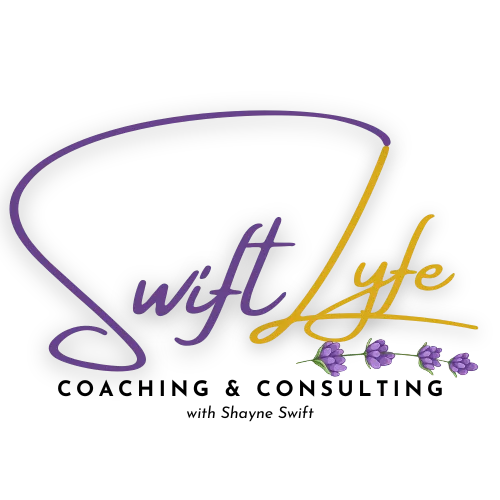By Shayne Swift | SwiftLyfe Coaching & Consulting
Picture this: you’re the “model minority.” You’re expected to be quiet, high-achieving, emotionally controlled, and endlessly resilient. But inside, your thoughts race, your focus wavers, and self-doubt hums beneath every perfect grade or polished façade. ADHD? That’s not even on the radar.
The Model Minority Myth: A Double-Edged Sword
The model minority myth has long been used to stereotype Asian communities in the U.S. as naturally successful, hardworking, and problem-free. It paints a picture of academic excellence, economic achievement, and emotional restraint. But this myth does more harm than good—it erases diversity, silences struggle, and perpetuates systemic invisibility.
For many Asians with ADHD, this stereotype becomes a mask. Seeking help may be viewed as weakness. Admitting struggle might be seen as dishonoring your family. And so, like many of my BIPOC clients, you learn to overcompensate—fueling cycles of perfectionism, burnout, and internalized shame.
“Masking” doesn’t just mean hiding neurodivergent traits—it often means hiding yourself to fit a culturally approved mold.
ADHD Goes Unseen and Undiagnosed
ADHD doesn’t look the same for everyone—and in Asian communities, it’s often overlooked entirely. Cultural norms that value obedience, self-control, and academic success can make inattentiveness or emotional dysregulation feel like personal failings instead of neurodevelopmental traits.
Many Asian Americans grow up navigating the silent tension of being both marginalized and mythologized. You’re often told to work twice as hard and speak half as much. When ADHD symptoms surface, they’re mistaken for laziness, rebellion, or immaturity—not indicators of an underlying condition (Additude, 2024).
Additionally, stigma around mental health persists in many Asian cultures, where emotional struggles are often viewed as private matters to be handled quietly or denied altogether. This creates a landscape where late diagnosis—or no diagnosis at all—is common.
What I’ve Seen in Expressive Arts Coaching
As a coach working at the intersection of ADHD and identity, I’ve had the privilege of guiding clients—some of them Asian American—through my Expressive Arts Coaching Pilot. These sessions revealed something powerful:
🖌️ Words often fail where art speaks volumes.
When participants explore their ADHD through creative expression, they often uncover emotional truths they’ve never verbalized. The pressure to “be the good child,” to “not rock the boat,” to “always bring honor”—these themes show up in the imagery, colors, and symbolism of their digital creations.
Clients have used tools like AI-generated art, collages, and layered visual storytelling to express:
- The mental clutter that builds from masking their ADHD.
- The tension between personal desires and cultural expectations.
- A longing for rest, spaciousness, and authenticity.
And what’s most profound? The relief of being seen without having to explain every layer of cultural complexity.
In expressive arts coaching, you don’t need to justify your exhaustion. You just get to name it—and make space to move through it.
Layering Identity: ADHD + BIPOC Realities
ADHD in BIPOC communities doesn’t happen in a vacuum—it collides with racism, generational trauma, colonial legacies, and a lack of culturally informed care.
For Asian individuals, this often means:
- Navigating Western medical systems that aren’t trained to recognize ADHD outside of the white, hyperactive male stereotype.
- Feeling pressure to “succeed” silently, while masking executive dysfunction.
- Internalizing shame when ADHD symptoms clash with cultural values of discipline, family responsibility, or filial piety.
This is why representation in coaching, therapy, and education matters. Cultural nuance is not a luxury—it’s a necessity for effective support.
Rewriting the Narrative
Unmasking ADHD in Asian communities means doing three radical things:
- Naming the truth: The model minority myth is a tool of erasure. It flattens the richness of Asian identities and hides our mental health needs.
- Making space for imperfection: You don’t need to perform your worth through productivity. ADHD doesn’t make you less Asian—or less valuable.
- Calling in culturally responsive support: Diagnosis and coaching must consider how culture, race, and neurodivergence intersect.
I’ve worked with clients who only discovered their ADHD as adults—after years of feeling “lazy,” “inconsistent,” or “not good enough.” Often, their biggest breakthroughs come not from medication or time-blocking, but from realizing that they were never broken to begin with.
From Silence to Sovereignty
To every Asian ADHDer:
Your story matters.
Your challenges are real.
And your healing is not selfish—it’s revolutionary.
The expressive arts show us that healing doesn’t always start with a diagnosis. Sometimes, it begins with a brushstroke, a sound, a line of poetry… and the brave decision to show up as your full self.
Let’s challenge outdated norms, drop the masks, and co-create new narratives rooted in authenticity, not assimilation.
References
- Additude. (2024). Asian American Girls and Women Can Have ADHD, Too!. Retrieved from https://www.additudemag.com/asian-american-girls-women-adhd/
- Verywell Mind. (2022). What Is the Model Minority Myth?. Retrieved from https://www.verywellmind.com/what-is-the-model-minority-myth-6259907


